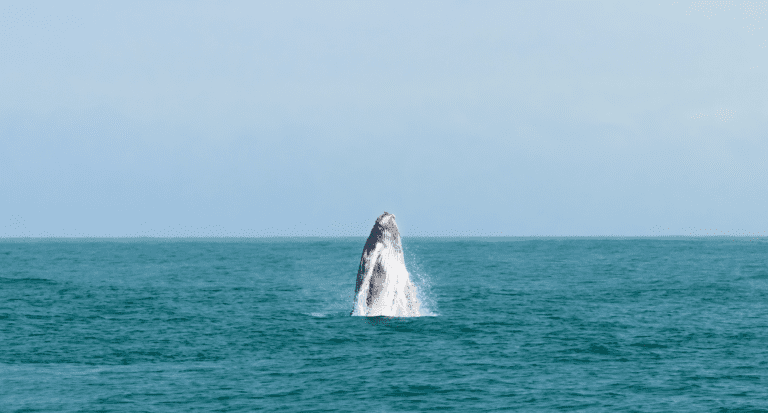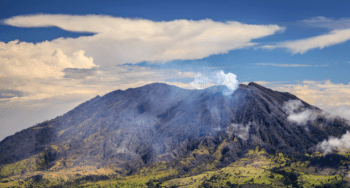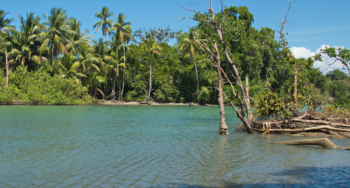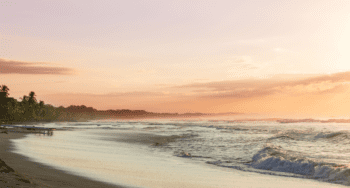Quick Guide to Marino Ballena National Park
Marino Ballena National Park is the only place on Earth where humpback whales from both hemispheres migrate, giving you two annual viewing seasons instead of one. Located 4 hours south of San José near Uvita, this 13,000-acre marine park combines the famous “whale’s tail” tombolo formation (visible only at low tide) with some of Costa Rica’s best whale watching opportunities. Whether you’re catching Northern Hemisphere whales from July-November or Southern visitors December-April, this lesser-crowded alternative to Manuel Antonio delivers authentic marine encounters at just $6 per person.
Key Park Details:
- Entrance fee: $6 foreigners, $2 residents (cash only)
- Four beach entrances: Uvita (whale’s tail), Colonia (swimming), Ballena (snorkeling), Piñuela (solitude)
- Whale seasons: July-November (Alaska/California) and December-April (Antarctica)
- Parking: $6 at Uvita entrance, varies at others
What You Need to Know:
- Check tide charts before visiting – the whale’s tail only appears at low tide
- Boat tours ($60-90) get you within 100 meters of whales vs. distant shore viewing
- Pack everything – no food vendors, gear rentals, or facilities inside the park
- Standard vehicles work for Uvita entrance; 4×4 helps for other beaches during green season
Planning your Southern Zone adventure? Contact our team for vehicle recommendations and insider tips on navigating Costa Rica’s Pacific coast.
Marino Ballena National Park protects 13,000 acres of Pacific Ocean and coastal habitat where something remarkable happens twice a year—humpback whales from both hemispheres migrate here, making it the only place on Earth where you can spot these giants during two distinct seasons. Beyond the whales, this park showcases a natural tombolo formation called “la cola de ballena” (the whale’s tail) that emerges at low tide, connecting the mainland to a rocky outcrop in one of Costa Rica’s most photographed natural phenomena.
Located just outside the small beach town of Uvita in Costa Rica’s Southern Zone, Marino Ballena sits about 4 hours south of San José and 90 minutes from Manuel Antonio. The park encompasses multiple beach access points, coral reefs for snorkeling, and coastal rainforest where you’ll spot everything from scarlet macaws to three-toed sloths.
Key Takeaways
- Two whale seasons annually: July-November (Northern Hemisphere) and December-April (Southern Hemisphere)
- The whale’s tail formation appears only at low tide—check tide charts before visiting
- Four beach entrances offer different experiences: Uvita for the whale tail, Colonia for swimming, Ballena for snorkeling
- Entry fee: $6 for foreigners, paid at ranger stations
- Vehicle considerations: Standard cars work for Uvita entrance; 4×4 helpful for other beaches during green season
- Best base towns: Uvita (convenient), Ojochal (culinary scene), Dominical (surf vibe)
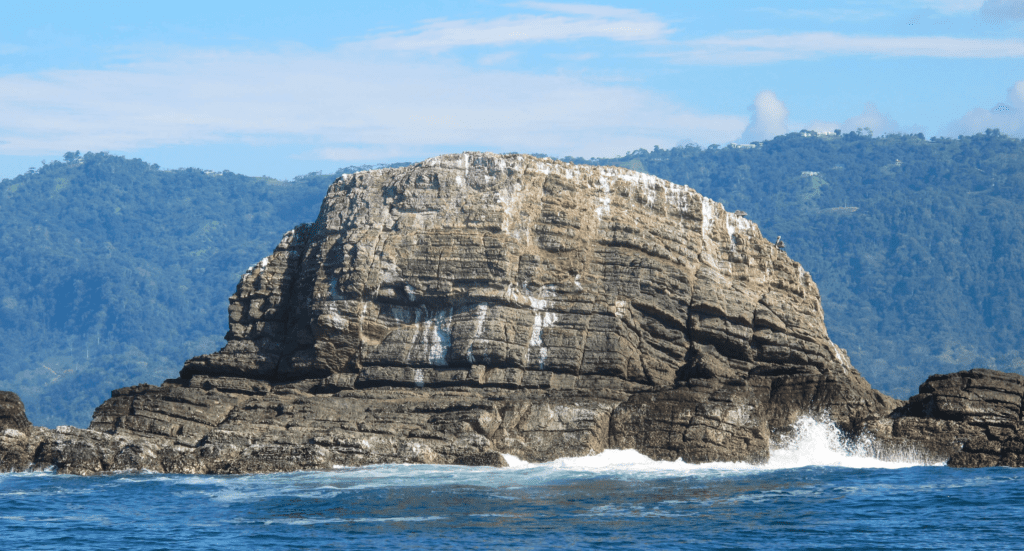
When Should You Actually Visit Marino Ballena National Park?
The timing question matters more here than at most Costa Rican destinations because you’re dealing with tide schedules and whale migrations simultaneously.
For whale watching: There are options year-round, but the peak seasons differ. July through November brings humpbacks migrating from Alaska and California—these are typically mothers with calves. December through April welcomes Southern Hemisphere whales from Antarctica. Peak viewing happens during the transition months (August-September and January-February) when both populations sometimes overlap.
For the whale’s tail formation: This is tide-dependent, not seasonal. The tombolo fully emerges during low tide and disappears during high tide. You’ll want to arrive 1-2 hours before low tide to walk out comfortably and have time to explore before the water returns. Check Tides4Fishing for daily schedules—missing this timing means missing the park’s signature feature.
Weather considerations: Dry season (December-April) brings calmer seas and better visibility for snorkeling. Green season (May-November) means afternoon rain but also lush surroundings and fewer crowds. The ocean can be rougher during green season, occasionally limiting boat tours.
Which Beach Entrance Works Best for Your Plans?
Marino Ballena has four official access points, and choosing the right one significantly impacts your experience. Most visitors stick to Uvita, but the other entrances offer distinct advantages depending on what you’re after.
Playa Uvita (Main Entrance)
This is the primary access point for viewing the whale’s tail formation. The ranger station sits right at the entrance, parking costs $6 (separate from park entry), and you’ll find basic facilities including restrooms and outdoor showers.
The beach stretches wide with dark sand, and at low tide, you can walk the entire tombolo formation. Expect other visitors here—it’s the most popular entrance—but the beach is long enough that you’ll find space. The northern end of the beach offers calmer water for swimming.
Playa Colonia
Located south of Uvita, this entrance sees fewer visitors despite offering excellent swimming conditions. The beach features lighter sand, more palm trees for shade, and generally calmer water due to its protected position.
Access requires driving through Bahía Ballena village. During green season, the final approach can be muddy—this is where 4×4 becomes valuable, though many standard cars make it through carefully. There’s a small ranger station and limited parking.
Playa Ballena
This entrance works best for snorkeling and marine life observation. The rocky areas near the point host diverse coral formations, though you’ll need to bring your own gear (nothing’s available for rent at the entrance).
The drive takes you through Bahía village, and parking is more limited than at other entrances. Arrive early during weekends and holidays.
Playa Piñuela
The northernmost entrance offers the most seclusion. It’s rockier than the other beaches, making it less ideal for swimming but excellent for tide pool exploration and bird watching.
Access is trickier—follow signs from the Costanera Sur highway and expect unpaved roads. This entrance works best for visitors seeking solitude rather than facilities.
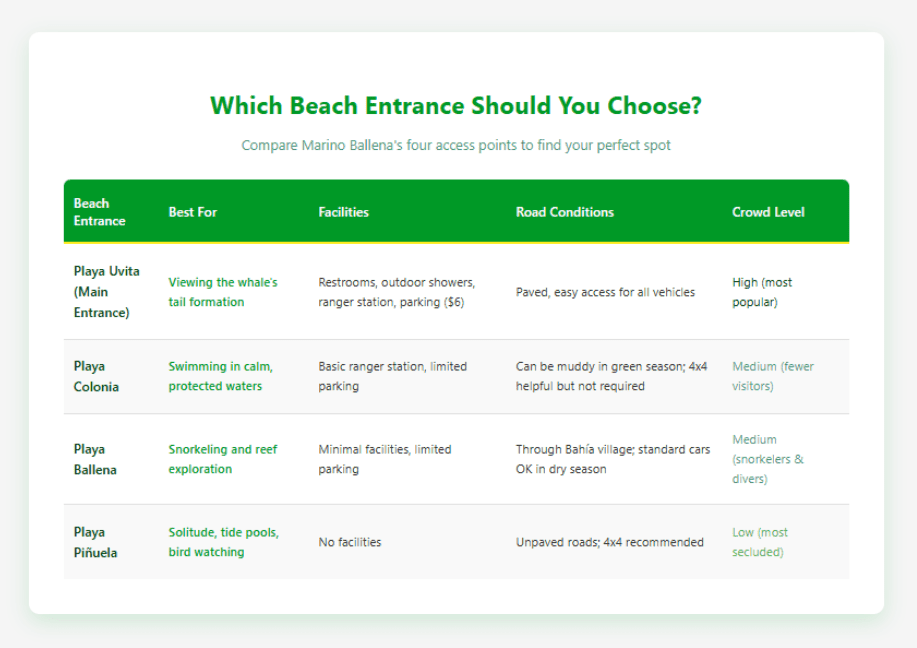
How Do You Actually Get to Marino Ballena from San José or Liberia?
The drive from San José takes approximately 4 hours via Route 27 (the San José-Caldera highway) and then south on the Costanera Sur (Coastal Highway). You’ll pass through Jacó and Quepos before reaching Uvita—the small town that serves as the gateway to Marino Ballena.
From Liberia, expect 5-6 hours of driving, which is why most visitors to the Southern Zone fly into San José instead. The route takes you through the mountain town of San Isidro de El General before descending to the coast.
Navigation tips: Use “Uvita, Puntarenas” as your GPS destination. Once in Uvita, look for signs directing you to “Parque Nacional Marino Ballena” or “Playa Uvita.” The main entrance is well-marked off the Costanera highway.
Road conditions: The Costanera is mostly paved now, though occasional sections undergo repairs. Watch for speed bumps (“reductores de velocidad”) in every small town—they’re often unmarked and can damage vehicles if you hit them fast.
Fuel planning: Fill up in Quepos or Uvita. Gas stations become sparse south of here, and you don’t want to be searching for fuel with a quarter tank if you plan to explore further south to Ojochal or Dominical.
For visitors exploring multiple Southern Zone destinations, Marino Ballena works well as an anchor point. It’s 15 minutes from Dominical (popular surf town), 20 minutes from Ojochal (known for international restaurants), and about 2 hours from Drake Bay or the Osa Peninsula entrance.
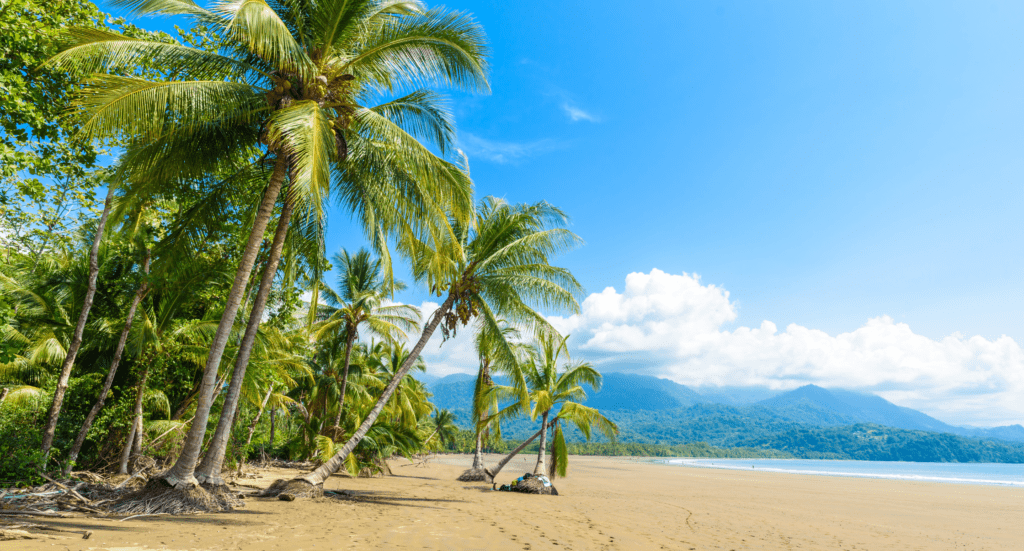
What Wildlife Will You Actually See at Marino Ballena?
The park’s biodiversity extends beyond the famous humpback whales, though those remain the marquee attraction.
Marine life: Besides humpback whales, you’ll frequently spot bottlenose dolphins, spinner dolphins, and occasionally pilot whales. Sea turtles (olive ridley, hawksbill, and green) nest on these beaches from April through October. Manta rays and schools of tropical fish populate the reef areas.
Coastal birds: Brown pelicans, magnificent frigatebirds, and brown boobies are common sights. The coastal trees host scarlet macaws, toucans, and various heron species. Visit early morning for the best bird watching.
On land: The narrow coastal forest strip between the beach and highway hosts howler monkeys, white-faced capuchins, three-toed sloths, coatis, and agoutis. Don’t expect dense jungle hiking—this is primarily a marine park—but wildlife spotting happens regularly along the beach-forest edge.
What about the whales: During peak season, shore-based whale watching can be productive, especially from elevated viewpoints at the northern end of Playa Uvita. You’ll spot spouts (water vapor from blowholes) and occasionally breaches. For closer encounters, boat tours operate from Uvita and Bahía—these get you within the legal viewing distance (100 meters) and dramatically improve your chances of extended sightings.
Learn more about Costa Rica’s national park system and conservation efforts.
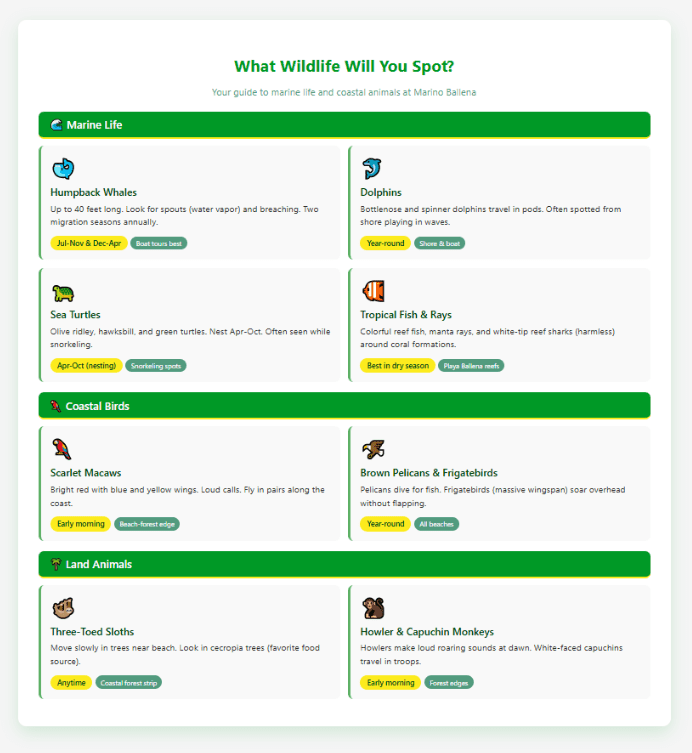
Should You Book a Whale Watching Tour or Watch from Shore?
This depends on your priorities and budget. Shore viewing costs nothing beyond park entry, but boat tours provide vastly superior experiences if whales are your main motivation.
Shore watching advantages: You can spend entire days at the park, enjoy the beach between whale sightings, and save $60-80 per person. During peak season, you’ll likely spot spouts and distant behaviors. The northern point of Playa Uvita offers the best shore-based vantage.
Boat tour advantages: You get within 100 meters of the whales (legally regulated distance), spend 2-3 hours focused specifically on whale searching with experienced guides, and see behaviors like tail slapping, pectoral fin waving, and breaching up close. Tours depart from Uvita beach or Bahía and cost $60-90 per person.
Tour timing: Operators typically run morning tours (7:30-8:00 AM departures) when seas are calmest. Book a day or two in advance during peak season, though last-minute spots sometimes open up. Most tours include snorkeling stops at reef locations.
Motion sensitivity note: The tours are on small boats on open ocean. If you’re prone to seasickness, take medication before boarding. Morning tours encounter calmer conditions than afternoon departures.
What’s the Deal with Snorkeling at Marino Ballena?
The park protects five coral reef formations, though snorkeling here differs significantly from Caribbean conditions.
Pacific Ocean visibility rarely matches Caribbean clarity—expect 15-30 feet on good days versus 100+ feet in Caribbean waters. The upside? Bigger marine life. You’ll see larger fish schools, occasional rays, sea turtles, and sometimes sharks (harmless white-tip reef sharks, not the concerning kind).
Best snorkeling locations: The rocky areas off Playa Ballena and the reef formations near the tombolo offer the most marine life. Playa Colonia has some reef patches but they’re more spread out.
Gear: Bring your own—there are no equipment rentals at any park entrance. Uvita town has a few shops selling basic snorkeling gear, but selection is limited. Most visitors who plan to snorkel bring equipment from home or rent from shops in Manuel Antonio before heading south.
Timing: Snorkel during high tide when water is deeper over the reefs. Low tide exposes some formations and reduces water depth to uncomfortable levels.
Safety: Currents can be strong, particularly during tide changes. Stay close to shore unless you’re a strong swimmer, and never snorkel alone. The park doesn’t have lifeguards.
Where Should You Base Yourself to Visit Marino Ballena?
Three towns provide convenient access to the park, each with different character and advantages.
Uvita: The practical choice. You’re 5 minutes from the park entrance, surrounded by tour operators, restaurants, and services. Uvita’s grown significantly as tourism has developed—it’s no longer the sleepy village it was a decade ago, but it maintains a relaxed beach town vibe. The famous Uvita Waterfall (Catarata Uvita) offers a freshwater swimming option when you’ve had enough salt water.
Accommodation ranges from budget hostels ($15-25/night) to boutique hotels ($100-200/night). The Saturday morning farmers market brings together organic produce vendors, artisans, and food stalls—it’s the social hub of the area.
Ojochal: Located 10 minutes south of Uvita, this village has developed an unexpected culinary reputation. French and international chefs have opened restaurants here, creating what locals call “Ojochal’s culinary mile.” You’ll find excellent French, Spanish, and fusion cuisine—unusual for such a small Costa Rican beach town.
The village sits slightly inland but provides quick access to both Marino Ballena and Playa Tortuga. Accommodation leans toward vacation rentals and small B&Bs rather than hotels.
Dominical: This surf town sits 15 minutes north of the park entrance and attracts a different crowd—younger, more backpacker-oriented, with active nightlife (by Southern Zone standards). If you’re combining Marino Ballena with surf lessons and want evening entertainment options, Dominical works well.
The surf break is consistent but powerful—better for intermediate and advanced surfers than beginners. Several surf schools operate here if you want instruction.
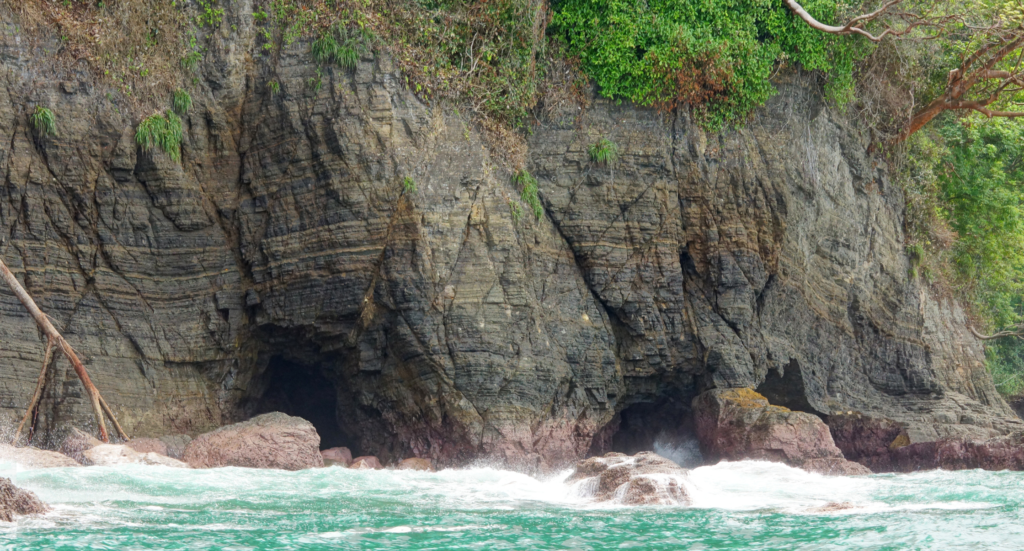
What Do You Need to Bring to Marino Ballena?
Pack thoughtfully because facilities at the park are minimal—this isn’t Manuel Antonio with vendors and restaurants nearby.
Essential items:
- Water (bring more than you think you’ll need—at least 2-3 liters per person for a full day)
- Snacks or packed lunch (no food vendors inside the park)
- Reef-safe sunscreen (traditional sunscreen damages coral reefs)
- Hat and sunglasses
- Cash for entrance and parking fees (credit cards aren’t accepted)
For specific activities:
- Snorkeling gear (mask, snorkel, fins)
- Water shoes (rocky areas and sea urchins make these valuable)
- Waterproof bag for electronics
- Binoculars for whale watching from shore
Don’t bother with:
- Beach chairs or umbrellas (palm trees provide natural shade, but it’s limited)
- Excessive beach gear (you’ll be walking on sand, sometimes considerable distances)
How Does Marino Ballena Fit into a Longer Southern Zone Itinerary?
The park works well as part of a 4-7 day Southern Zone exploration, particularly for visitors interested in moving beyond Costa Rica’s more developed northern regions.
Sample 5-day Southern Zone itinerary:
- Day 1: Drive from San José to Uvita, afternoon at Marino Ballena
- Day 2: Morning whale watching tour, afternoon exploring Uvita town and waterfall
- Day 3: Day trip to Nauyaca Waterfalls (45 minutes away) or Corcovado National Park day tour
- Day 4: Drive to Dominical for surfing or beach time, dinner in Ojochal
- Day 5: Morning at Playa Ventanas (30 minutes south, features tide caves), return north
Alternative northern connection: Some travelers combine Marino Ballena with Manuel Antonio National Park. These destinations sit 90 minutes apart, making a 2-3 night stay in each location practical. Manuel Antonio offers more infrastructure and developed tourism, while Marino Ballena provides a quieter, less crowded experience.
Vehicle considerations for multi-destination trips: The Costanera highway makes the Southern Zone more accessible than it was a decade ago, but distances are real. Budget driving time carefully, and consider that Costa Rican mountain roads rarely allow the sustained speeds you might expect. What maps show as “2 hours” often takes 2.5-3 hours in reality.
Having your own vehicle opens the Southern Zone significantly. Public buses connect Uvita to San José and major towns, but reaching specific beaches, restaurants in Ojochal, or attractions like Nauyaca Waterfalls becomes challenging without a car. Vamos Rentacar’s 4×4 options work particularly well for Southern Zone exploration, providing the clearance and traction that makes green season travel and secondary beach access comfortable rather than stressful.
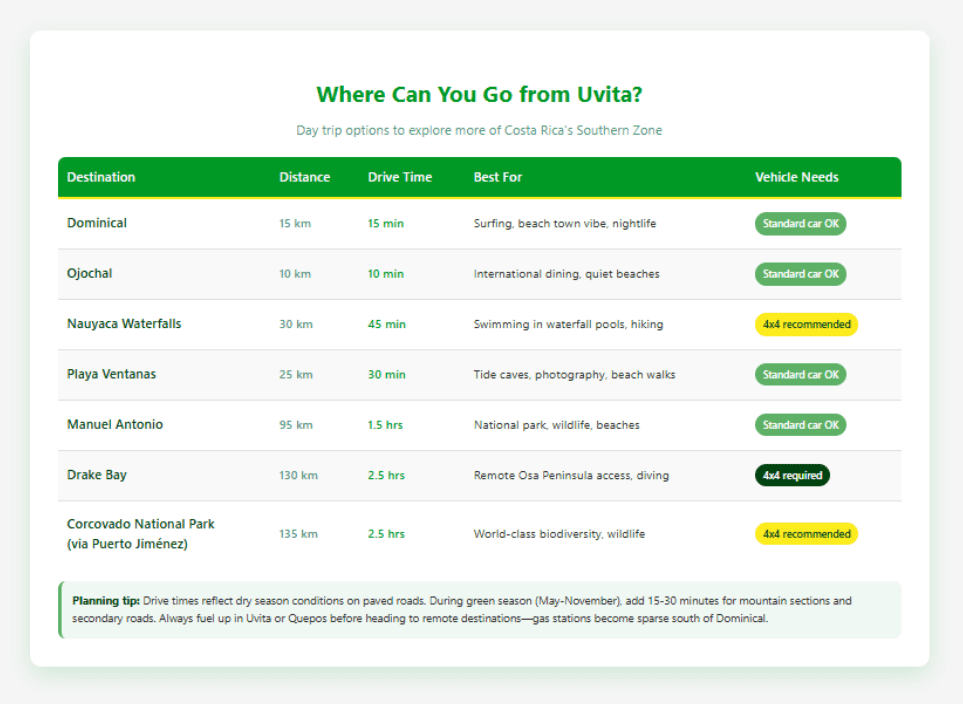
What Actually Costs Money at Marino Ballena?
The financial commitment here is modest compared to many Costa Rican attractions, though costs add up if you’re adding tours.
Park entrance: $6 per person for foreigners, $2 for Costa Rican residents. Children under 12 enter free. Pay at ranger stations at each entrance—cash only.
Parking: $6 at the main Uvita entrance, variable at other beaches (some are free, some charge $3-5). Private lots near entrances sometimes charge $5-10 for all-day parking.
Whale watching tours: $60-90 per person depending on tour length and whether snorkeling is included. Tours run 2.5-3.5 hours typically.
Accommodations: Budget: $15-40/night (hostels, basic cabinas), Mid-range: $60-120/night (comfortable hotels, vacation rentals), Upper-range: $150-300+/night (boutique hotels, luxury rentals).
Food: Sodas (local restaurants) serve casados for $5-8. Tourist-oriented restaurants charge $10-20 for entrees. Ojochal’s upscale restaurants run $20-40 per entree.

Ready to Experience Costa Rica’s Best Whale Watching?
Marino Ballena National Park delivers what most visitors to Costa Rica’s Southern Zone are seeking—authentic wildlife encounters in a less developed setting where your presence supports conservation rather than overwhelming it.
Your next steps: Check whale season dates against your travel window, then cross-reference with tide schedules if seeing the whale’s tail formation is a priority. Book accommodations in Uvita for convenience or Ojochal if food matters as much as the beach. Reserve a whale watching tour 2-3 days before your preferred date during peak season.
For driving from San José, plan a full morning for the journey and consider stopping in Quepos for lunch and fuel before continuing south. The road quality is good, but mountain sections require attention—this is a route for focused driving.
The Southern Zone rewards visitors who embrace its relaxed pace and recognize that less development often means more authentic experiences. You won’t find the resort infrastructure of Guanacaste or the density of tours in La Fortuna. What you will find are humpback whales breaching in two separate seasons annually, a natural formation that appears and disappears with the tide, and a coastline that still looks remarkably like it did before Costa Rica became an international destination.
Pack your reef-safe sunscreen, download those tide charts, and get ready to see why locals consider the Southern Zone Costa Rica’s best-kept secret.
Ready to Experience Costa Rica's Best Whale Watching?
Marino Ballena National Park delivers what most visitors to Costa Rica’s Southern Zone are seeking—authentic wildlife encounters in a less developed setting where your presence supports conservation rather than overwhelming it.
Your next steps: Check whale season dates against your travel window, then cross-reference with tide schedules if seeing the whale’s tail formation is a priority. Book accommodations in Uvita for convenience or Ojochal if food matters as much as the beach. Reserve a whale watching tour 2-3 days before your preferred date during peak season.
For driving from San José, plan a full morning for the journey and consider stopping in Quepos for lunch and fuel before continuing south. The road quality is good, but mountain sections require attention—this is a route for focused driving.
The Southern Zone rewards visitors who embrace its relaxed pace and recognize that less development often means more authentic experiences. You won’t find the resort infrastructure of Guanacaste or the density of tours in La Fortuna. What you will find are humpback whales breaching in two separate seasons annually, a natural formation that appears and disappears with the tide, and a coastline that still looks remarkably like it did before Costa Rica became an international destination.
Pack your reef-safe sunscreen, download those tide charts, and get ready to see why locals consider the Southern Zone Costa Rica’s best-kept secret.
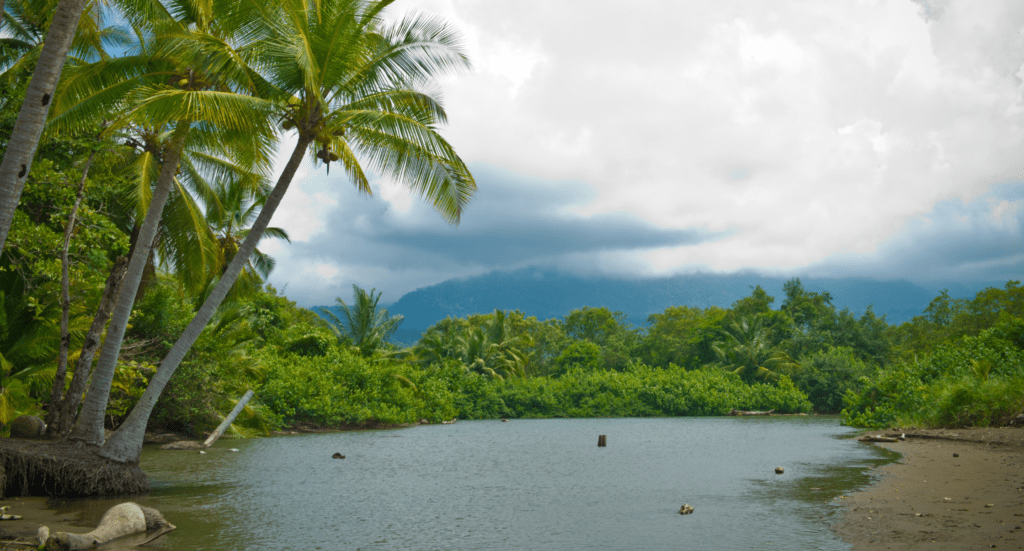
Frequently Asked Questions
Is Marino Ballena National Park worth visiting?
Absolutely, especially if whales are on your Costa Rica bucket list. This is the only place on Earth where humpback whales from both hemispheres show up—meaning you’ve got two annual whale seasons (July-November and December-April) instead of one. Beyond the whales, the famous whale’s tail formation (tombolo) at low tide makes for incredible photos, and the park sees way fewer crowds than Manuel Antonio. At just $6 entry, it’s one of the most affordable parks in Costa Rica. Skip it if you’re only doing a quick Pacific coast trip and can’t dedicate at least a full day to the Southern Zone.
When can you actually see whales at Marino Ballena?
You’ve got options year-round, but peak viewing happens during two distinct seasons. July through November brings Northern Hemisphere humpbacks migrating from Alaska and California—these are often mothers with calves. December through April welcomes Southern Hemisphere whales coming from Antarctica. The best months are the transition periods (August-September and January-February) when both populations sometimes overlap. For boat tours, book morning departures when seas are calmest.
When does the whale’s tail formation appear?
The tombolo only emerges at low tide—it’s completely underwater during high tide. You’ll want to arrive 1-2 hours before low tide to walk out comfortably and explore before the water returns. Check tide schedules at Tides4Fishing before your visit because missing this timing means missing the park’s signature feature. This is tide-dependent, not seasonal, so it happens year-round at different times each day.
How much does Marino Ballena cost?
Park entry runs $6 per person for foreigners ($2 for Costa Rican residents), and kids under 12 get in free. Parking costs $6 at the main Uvita entrance but varies at other beach entrances—some are free, others charge $3-5. If you’re adding a whale watching boat tour, expect to pay $60-90 per person for a 2.5-3 hour trip that typically includes snorkeling stops. Bring cash since credit cards aren’t accepted at ranger stations.
Should you book a whale watching tour or just watch from shore?
This depends on your budget and how much you care about close encounters. Shore watching from the northern point of Playa Uvita costs nothing beyond park entry, and during peak season you’ll likely spot spouts and distant behaviors. Boat tours cost $60-90 per person but get you within the legal 100-meter distance, dramatically improving your chances of seeing breaches, tail slapping, and other behaviors up close. Tours also include experienced guides who know where whales are that day. If whales are your main reason for visiting, the boat tour is worth it. If you’re there for the overall beach experience, shore watching works fine.
How far is Marino Ballena from Manuel Antonio and San José?
From Manuel Antonio, you’re looking at 90 minutes south on the Costanera Sur highway—making it practical to combine both parks if you’re dedicating 4-5 days to the Pacific coast. From San José, expect a 4-hour drive via Route 27 and then south on the Costanera. The drive passes through Jacó and Quepos, so plan a lunch and fuel stop in Quepos before continuing. The road quality is good, but mountain sections through certain areas require attention.
Where should you stay to visit Marino Ballena—Uvita, Dominical, or Ojochal?
Uvita is the practical choice since you’re 5 minutes from the park entrance and surrounded by tour operators, restaurants, and services. It’s grown as tourism has developed but still maintains a relaxed beach town vibe. Dominical (15 minutes north) works if you want a surf town atmosphere with more nightlife and don’t mind the short drive. Ojochal (10 minutes south) is perfect if food matters as much as the beach—this tiny village has developed an unexpected culinary scene with French and international restaurants. All three work fine, but Uvita offers the most convenience for park access.
What should you pack for a day at Marino Ballena?
The park has minimal facilities, so pack everything you’ll need. Bring 2-3 liters of water per person (no food vendors inside), reef-safe sunscreen (required by law for snorkeling), snacks or lunch, water shoes for rocky areas, cash for entry fees, and a hat. If you’re snorkeling, bring your own gear since there are no rentals at park entrances—Uvita town has limited gear available for purchase. Don’t forget binoculars if you’re planning to whale watch from shore, and download offline maps since cell service drops once you’re in the park.
